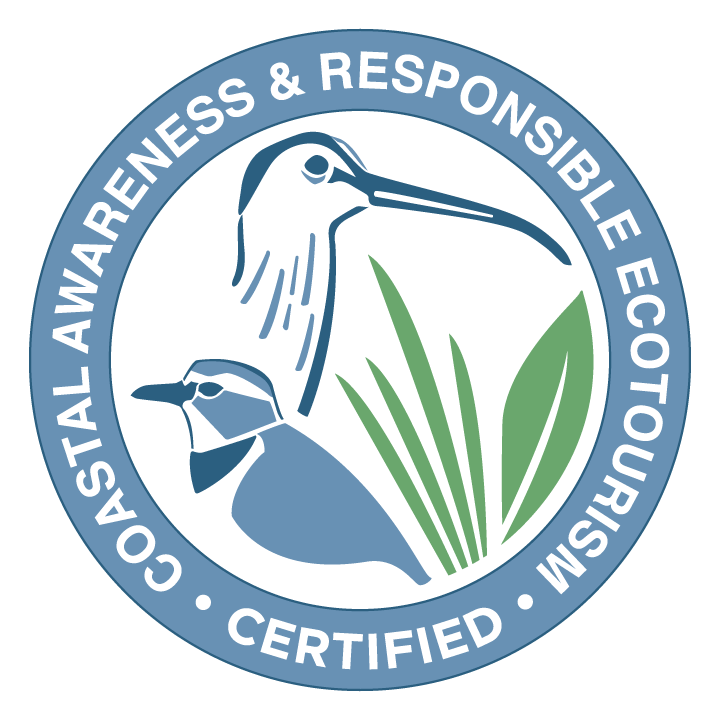Lesson 3: Nature-based Solutions for Climate Resilience
| Overview | Students will investigate the causes and effects of climate change with an emphasis on nature-based solutions. |
| Standards | SEV2. Obtain, evaluate, and communicate information to construct explanations of stability and change in Earth’s ecosystems. a. Analyze and interpret data related to short-term and long-term natural cyclic fluctuations associated with climate change. b. Analyze and interpret data to determine how changes in atmospheric chemistry (carbon dioxide and methane) impact the greenhouse effect. SEV4. Obtain, evaluate, and communicate information to analyze human impact on natural resources. b. Design, evaluate, and refine solutions to reduce human impact on the environment including, but not limited to, smog, ozone depletion, urbanization, and ocean acidification. |
Engage
Choose one of the before and after images from the Georgia Department of Natural Resources story map of Living Shorelines to show to your students. Ask them to make observations about the image. This would be another great time for a See, Think, Wonder table. If you would like to try something else you can use the “Yes, and…” partner discussion strategy. As students view the image one partner will share an initial observation, and their partner must respond with “Yes, and…” in order to share a different observation. This goes back and forth until you begin to notice the students have run out of observations, or they are talking about something else. Have a group discussion, and hopefully the students will mention the erosion happening on one side and the solution that was put in place to prevent the erosion. You can then guide the conversation into the potential causes of erosion.
Explore
There are two options for the explore part of this lesson. The first is to lead your students on a neighborhood or campus walk and have them make notes of human engineered and natural solutions to problems associated with flooding and erosion. If students have devices such as iPads, or phones they can take photos of what they see, or they can record observations in their journal. Scope out your site in advance and have some guiding questions prepared if students miss a certain solution.
If doing a walk is not an option, the students can do the sort found below. You can have them sort the images into categories of their choosing, and then have a discussion. The goal is for them to uncover that some solutions to flooding are considered grey infrastructure and those that are nature-based are considered green infrastructure.
Gray/Green Infrastructure Sort– Google Slides
Gray/Green Infrastructure Sort Answer Key- Google Slides
Explain
Tell students that today they will be investigating ways that communities can use green infrastructure, also known as nature-based solutions, for climate resilience. Remind students of the meaning of the word resilience as it applied to ecosystem resilience (resilience is the ability of an ecosystem to respond to disturbance by resisting damage and recovering quickly) from the first lesson. Ask students what they think is meant by climate resilience. Make sure students know that when talking about climate resilience, we are talking about the ability to prepare, respond and recover quickly from disturbances caused by climate change. Share with student that engineers are working on solutions to the problems caused by the effects of climate change, such as increased frequency in storms, sea level rise and an increase in the average annual temperature of Earth. In this lesson, students will explore some of the issues and potential solutions.
Have students complete the assignment below.
Climate Resilience -Evaluating Solutions- Student Sheet– Google Doc
Allow time for students to discuss the various problems and solutions. At the end of the lesson, make sure to bring it back to oysters and ask the students how oysters can play a role in climate resilience?
Elaborate
In the Explain assignment students learned how oysters can play a vital role in climate resilience including helping to increase biodiversity, but also protecting communities from storm surge and coastal flooding. In this portion of the lesson, students will learn how oysters can also act as a carbon sink. Remind students that carbon is necessary for life and has a cycle, just like water and nitrogen.

CLEAN. (n.d.). Carbon Cycle. Science Education and Resource Center at Carleton College. Retrieved January 16, 2024, from https://serc.carleton.edu/download/images/114779/carbon_cycle_diagram_1466775306722780178.webp.
The climate change problem we are facing is related to the sharp increase of carbon dioxide in the atmosphere. Drawing carbon down into carbon sinks, such as forests and wetlands, and as represented in the purple blocks, is a way to remove carbon from the atmosphere and can help to mitigate climate change.
Ask students if they have an idea of what is meant by the term blue carbon, and then play the video below.
Ask students if they believe that oysters can be a source of blue carbon? Inform students that scientists are researching this topic now, but there are some ideas out there.
Student Task: Take the information provided that explains the ways in which oysters are a blue carbon source, and create a model to represent this information.
Evaluate
Mini-Project: Choose a nature-based solution and create an infographic that describes the problem that the solution is solving and the benefits of using that solution.
If possible, print out the infographics and display them for students, or create a place online, such as a Padlet, where the students can view each other’s work. This will be useful when completing the culminating project at the end of the unit.
Project Instructions for Student Google Doc (make a copy and edit)
- Project Rubric Google Doc (make a copy to edit)
References
- Georgia Department of Natural Resources
- California Academy of Sciences
- CLEAN (Committed to Climate Energy Education)
- FEMA (Federal Emergency Management Agency
